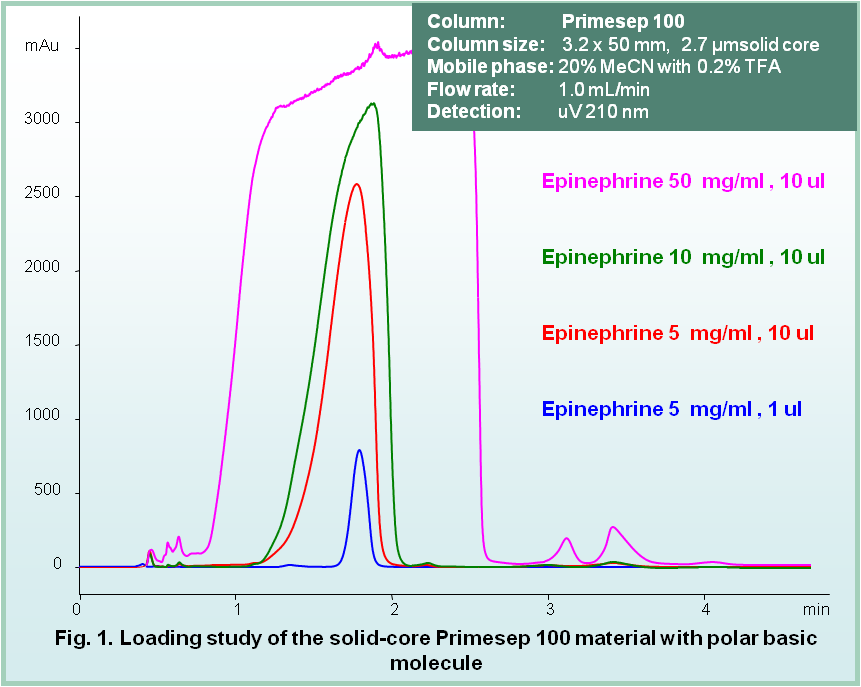Solid-Core Primesep 100 Separation Media
Primesep 100 Column is one of the most popular mixed-mode Columns. The universal nature of this media allows to analyze polar and hydrophobic molecules. The separation can be based on reverse phase, ion-exchange, and ion-exclusion interactions and their combinations.
Solid-core silica gel provides short diffusion distance and allows increase of separation speed with high mobile phase velocity.
One disadvantage of the solid-core support is lower capacity if compared to regular through porous material. The mixed mode materials demonstrated much higher loading capacity compare to regular RP phases (Nicola H. Davies, Melvin R. Euerby and David V. McCalley, Journal of Chromatography A, Volume 1138, Issues 1-2, 5 January 2007, 65-72). Thus the mixed-mode surface chemistry compensate for lost of loading capacity of partially non-porous particles.

Separation of amino acids without ion-pairing reagent on reversed-phase core-shell Columns (Fig. 3)
Amino acids are hydrophilic building blocks for many pharmaceutical compounds and nutrient supplements.
Depending on the pH of the mobile phase they can exist in acidic, basic or zwitter-ionic form.
At lower pH, amino acids are basic in nature and have the lowest hydrophobicity.
Retention and Separation of amino acids in BLIS-mode on mixed-mode core-shell Columns (Fig. 4)
Buffer less ion-separation (BLIS) was introduced by SIELC as a way to retain and analyze amino acids in
reversed-phase cation-exchange mode. This mode allows amino acids to be analyzed
as zwitter-ions without any ions/buffers in the mobile phase.
Solid-Core Primesep 100 columns are available in all standard dimensions
Column IDs: 22 mm, 10 mm, 4.6 mm, 3.2 mm, 2.1 mm, 1 mm, 0.5 mm, 0.25 mm
Column Lengths: 250 mm, 150 mm, 100 mm, 50 mm, 25 mm, 10 mm
Particles: 2.7 µm
Pores: 100 A


